The Alphacool NexXxoS Cool Answer 360 DDC/XT Liquid Cooling Kit Review
by E. Fylladitakis on October 24, 2016 9:30 AM ESTThe Alphacool Repack Reservoir
The Alphacool Repack is a reservoir designed to fit into a 5.25” external drive bay. This kit includes the DDC version of the reservoir that is designed to be joined with a Laing DDC pump. Although this particular version cannot be used with any other kind of pump, Alphacool offers several versions of this reservoir, including a simple version with compression fittings only.
The Repack is made almost entirely out of clear acrylic. The acrylic is very thick and inflexible, giving the reservoir exceptional overall mechanical strength. Alphacool installs a black metallic plate at the front of the reservoir with their logo, mainly serving as a level meter, but it can be removed if the user wishes. A metallic support plate at the rear of the reservoir is used as a support for the pump.
Two round openings for the pump’s headers and two threaded openings for compression fittings can be seen at the rear of the Repack. Note that the reservoir has internal pathways that separate the incoming and outgoing flows. The left of the compression fittings leads directly to the output of the pump, while the right fitting is for the incoming flow that leads the liquid into the reservoir. Unfortunately, there is no decoupling method for the pump, as it gets attached directly onto the metallic support plate. This transfers all of the vibrations of the pump to the reservoir and, in extension, to the case. Depending on the materials and the quality of the case, this can increase the overall noise output of the system.
The Laing DDC-1T pump
The Laing DDC-1T pump is not of Alphacool’s design. Rather the pump is a product of Goulds Water Technology, a Xylem brand, a company that specializes on commercial and industrial pumps. So that the pump could be used inside a PC, Alphacool merely attached a Molex power connector and a 3-pin tachometer sensor.
Although it looks like a very simple plastic apparatus, the DDC-1T is actually one of the best low-voltage DC pumps currently available. It utilizes a hemispherical motor that does not require shaft bearings and/or seals, significantly improving reliability and minimizing noise. The DDC-1T is also very powerful for a 10W device of this size with, according to Alphacool, a maximum discharge head of 3.7 meters and a maximum flow of 420 l/h. Goulds Water Technology states 4.5 m head and 410 l/h respectively in their specifications sheet.
The only downside of the DDC-1T is the narrow voltage operating range. This particular model can only operate with a voltage of 8V to 13.8V (12V maximum for a typical PC) and has a starting voltage of at least 9V, severely limiting its speed control capabilities. This is why Alphacool offers it with a Molex power connector; although your motherboard’s header should not have an issue powering the 10W pump, the company does not expect users to try and speed control it, as it can easily stall and stop if the supplied voltage drops under 8V, or not even start under certain situations.
Alphacool HF Brass Compression Fittings
Although the selection of proper fittings may seem like a mundane task, there are at least a few things that serious water cooling users need to be aware of. The first is the material of the fitting, as certain metals can cause serious corrosion even when using highly anti-corrosive liquid mixtures, and the second is the coloring (if present), as colors will fade very rapidly on certain materials like copper and brass.
Things get a little more complicated with compression fittings. Unlike simple barbed fittings, the compression fittings are made for tubing with a specific internal and outer diameter (ID and OD respectively). They are more convenient as this allow the user to tighten them by hand and offer more room for aesthetic interventions, but their nature requires precise machining with minimal tolerances. A poor quality compression fitting can easily become the source of leaks.
Alphacool’s HF fittings are made of brass and specifically for 13/10 mm OD/ID tubing. They are painted back with a chromating method that binds the color to the brass, preventing fading. The locking rings have a textured design for better grip. At nearly 6€ per piece, these are rather expensive, but the quality assurance is probably worth the high cost in a system that a poor quality item can cause catastrophic failures.
Alphacool Coolmove 2 Fans
Alphacool also supplies three 120 mm fans with this kit. The fans have black glossy frames and semitransparent blue blades. The blades are not flat but have jagged edges and hemispherical engravings, giving it a golf ball appearance. Their cables are sleeved using typical nylon black sleeving.
The company has rebranded the fans, hiding the OEM from the public. According to their specifications, these fans has a maximum speed of 1300 RPM and Hydro-Dynamic Bearings. It seems strange that the company decided to include a nine-blade design in a kit with a radiator this thick; fans with fewer and wider blades would have better pressure and could achieve better performance, especially at lower RPM. Alphacool however states that the XT45 is optimized for low/medium speed fans, which explains their choice.


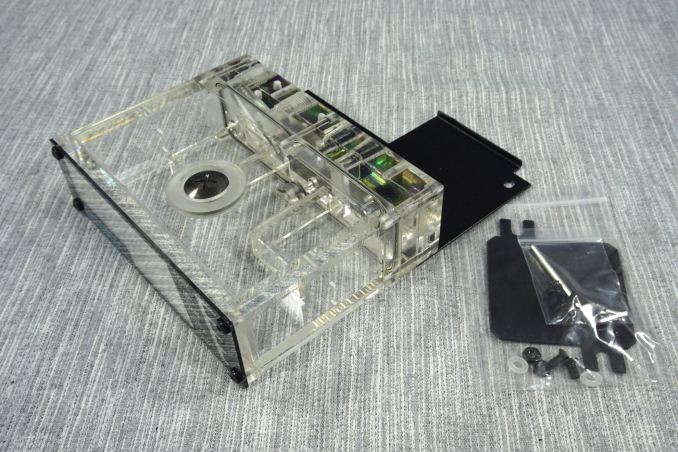
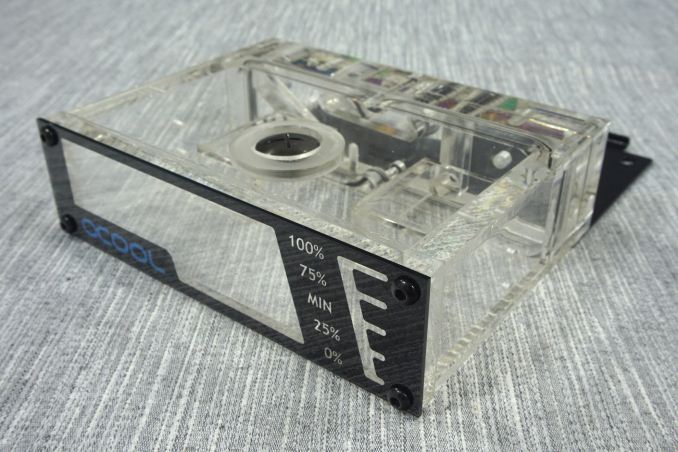

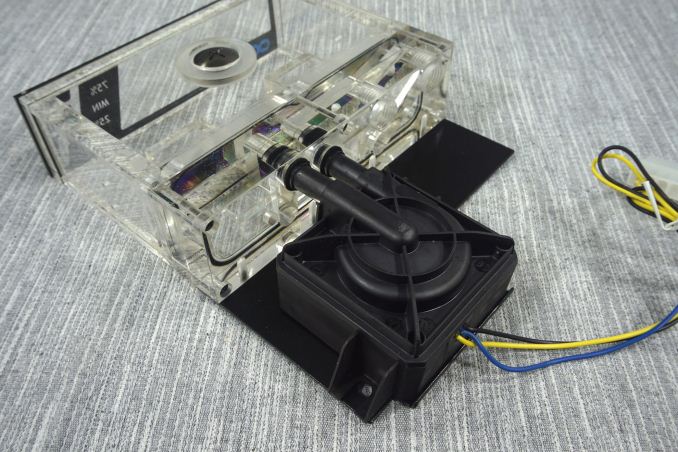
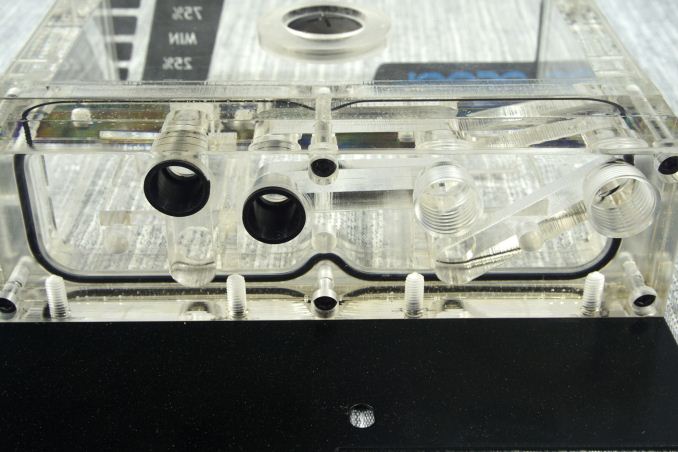


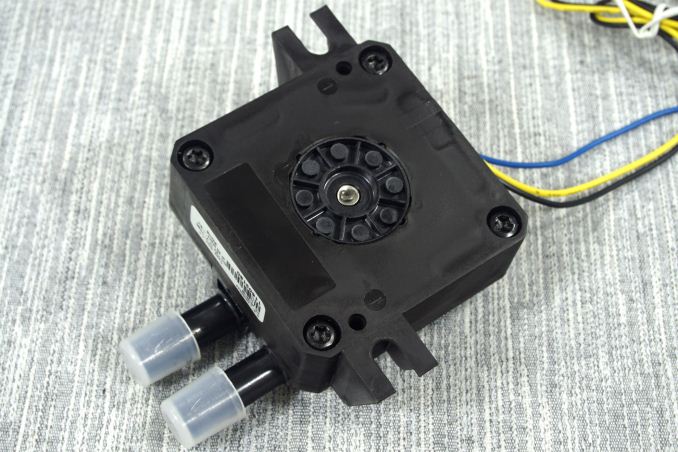
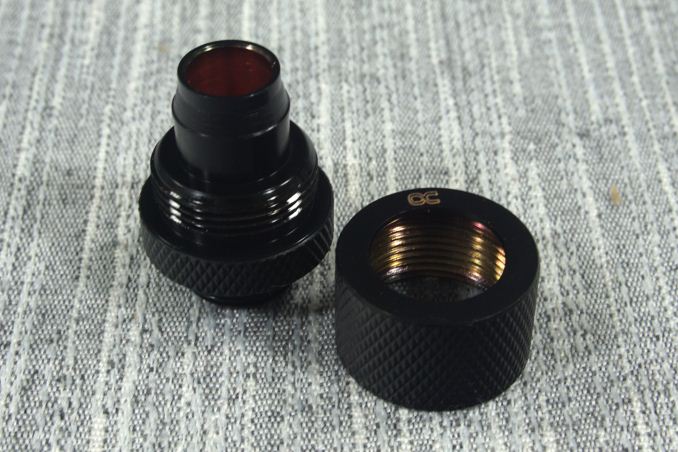
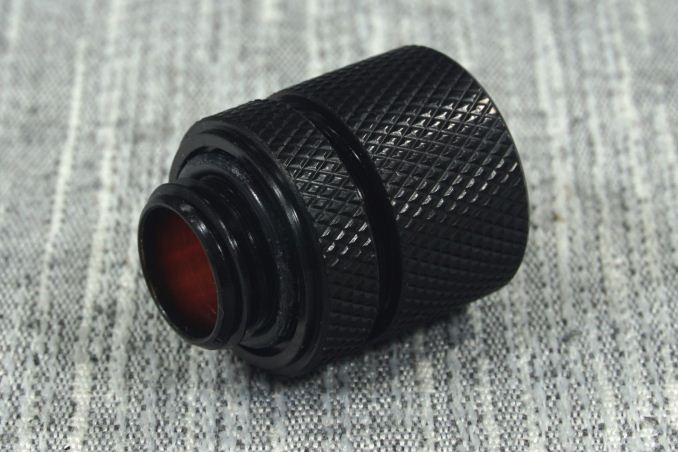
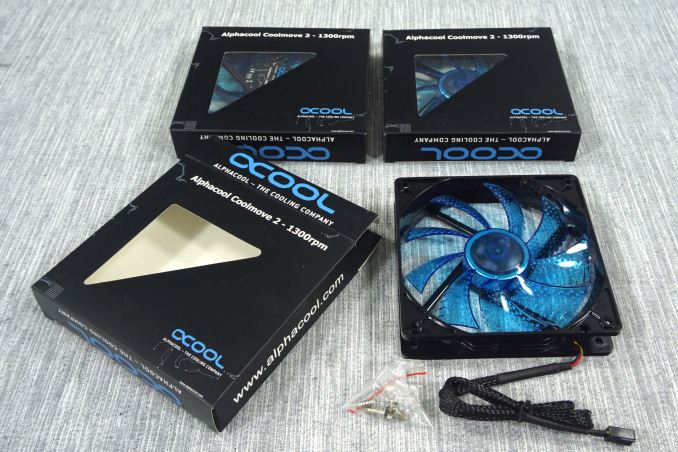
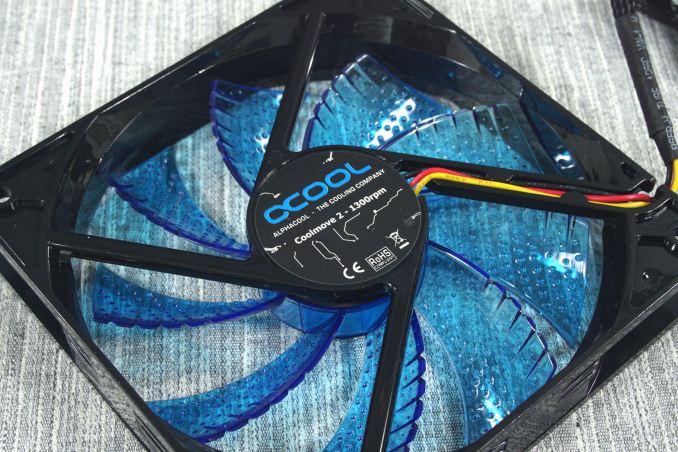








40 Comments
View All Comments
saratoga4 - Monday, October 24, 2016 - link
>copper block and a latheCopper block and mill. Lathe is the spinning one that works on pipes, mills are the drill type devices that cut blocks.
And yes, milling my first gpu cooling was pretty annoying. So much nicer these day :)
DanNeely - Monday, October 24, 2016 - link
Having used open loop coolers for the better part of a decade, I'll second that the DDC pump is going to be the loudest part if running at full speed unless you go crazy with fans. (I really wish someone would design a more suitable pump from the ground up instead of just slapping a modified top on the stock model.) However while it's picky about it's operating voltage you can slow and quiet them using PWM control. My current loop has a CPU, Mobo Mosfets, GPU, and a 560 radiator. Using an 4yo Swiftech DDC pump (not sure exact model they've got several of them) I've found that PWMing it to about 70% drops the high pitched pump noise below the noise floor of my low speed fans while only raising core temps by about 1-2C.Oxford Guy - Tuesday, November 8, 2016 - link
The pump in the EK L 2.0 kits is pretty quiet when suspended.Andrew LB - Wednesday, February 8, 2017 - link
I'm surprised they didn't use a pump like the DDC-1T PWM which is a 10w version that does 420l/h and is pretty much silent. I have one in my PC and even with an XSPC Raystorm V3 CPU block, Aquacomputer Krygraphics GTX 780ti full block, XSPC ex360 and ex280 radiators, and quite a few 90' and 45' XSPC rotary fittings, my DDC-1T PWM has a flow rate of 0.91gpm according to my Aquacomputer Aquaero with high-flow meter.Aerodrifting - Monday, October 24, 2016 - link
The part which the pump connects to the reservoir really concerns me. From the looks of it, It's just the barbs that come with DDC stock top (which we usually replace with custom ones to fit standard fittings plus better flow) go straight into the opening of the reservoir without any tightening measures. Are you sure that is not going to leak?BrokenCrayons - Monday, October 24, 2016 - link
The benchmark results are pretty impressive, but hardly worth the risk of mixing liquid with electricity or the added cost over just using the manufactuerer certified heatsink and fan that comes in the box with the CPU. So the processor runs at 40 degrees instead of 70. That's utterly meaningless to me when the max temp for a chip is typically +90 degrees and certainly not worth any additional cost at all much less a cost that includes the problem of pumping fluids around a system that works perfectly well with circulating air.Death666Angel - Monday, October 24, 2016 - link
It's a hobby. It can have some benefits, but it's a hobby first and foremost in my opinion. Yes, I could overclock my CPU and GPU some more while under water, it has a bit less noise and it can be more versatile. But modern aircooling is also pretty good, usually cheaper and not that much louder if you select good components. Though I will always spend a bit more to get a better cooler compared to the boxed offerings (headroom in the summer, dust buildup, better overclocking, quieter operations). But it depends on your setup and taste. :)BrokenCrayons - Monday, October 24, 2016 - link
That I can understand. Everyone has something they waste time and money on just for fun, but I don't think there's a practical reason behind it. I leave my desktop computer with it's 95W 860K CPU sitting in the mud room (no AC...basically my front porch) and run it headlessly to stream games. It spent the summer in ambient temps of around 80-85 degrees streaming games via Steam and the entire time it was and still is on the pre-Wraith HSF that came in the box with the CPU.Sure, I thought about replacing the cooler with something non-OEM or even getting a Wraith second hand from ebay or something, but there's absolutely no reason to do so. I can't rationalize spending even a minimal amount of money on it and then going through the trouble of opening the case up to replace the HSF. I might clean the dust bunnies out next spring, but at this point any additional cooling would serve no practical purpose.
letmepicyou - Monday, October 24, 2016 - link
There is a VERY practical purpose to water cooling which you're missing. If you've ever used a high end air cooler (and I have a cupboard full of them, up to the top shelf Thermalright Silver Arrow) then you know that they're HEAVY. This isn't a problem if your computer sits at your desk until cleaning time or your next upgrade cycle. I can promise you that having a huge cooler on your motherboard can be precarious if you tend to lug your PC around at all. You have to be pretty ginger with your movements.The reason I went to water cooling is now when I lug my PC around, I don't have to worry about component stresses. Given that I have a nice AIO loop on my CPU and run all SSDs, I could boot kick my tower and not worry about data loss or yanking the mounting post for my air cooler through the fiberglass of my motherboard.
BrokenCrayons - Tuesday, October 25, 2016 - link
Actually, my argument is in favor of OEM-boxed coolers that ship in retail packaging with the CPU. Those have never been too heavy for the mounting mechanisms that support them. The situation of an overweight air cooler is a self-inflicted wound that wouldn't have required the proverbial medical attention of liquid cooling had the person in question never picked up the overweight air cooler knife to begin with.